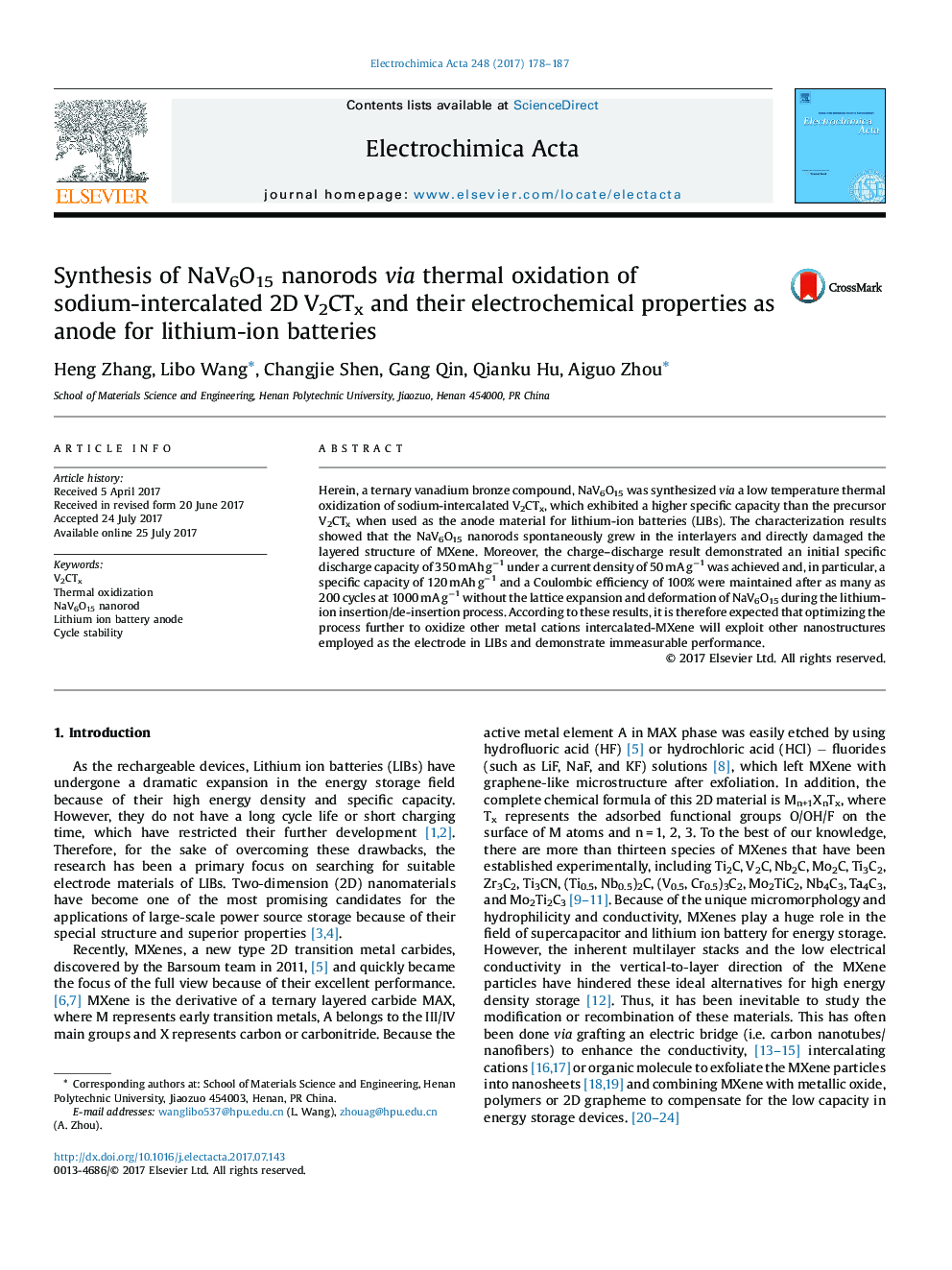| Article ID | Journal | Published Year | Pages | File Type |
|---|---|---|---|---|
| 4766898 | Electrochimica Acta | 2017 | 10 Pages |
Abstract
Herein, a ternary vanadium bronze compound, NaV6O15 was synthesized via a low temperature thermal oxidization of sodium-intercalated V2CTx, which exhibited a higher specific capacity than the precursor V2CTx when used as the anode material for lithium-ion batteries (LIBs). The characterization results showed that the NaV6O15 nanorods spontaneously grew in the interlayers and directly damaged the layered structure of MXene. Moreover, the charge-discharge result demonstrated an initial specific discharge capacity of 350 mAh gâ1 under a current density of 50 mA gâ1 was achieved and, in particular, a specific capacity of 120 mAh gâ1 and a Coulombic efficiency of 100% were maintained after as many as 200 cycles at 1000 mA gâ1 without the lattice expansion and deformation of NaV6O15 during the lithium-ion insertion/de-insertion process. According to these results, it is therefore expected that optimizing the process further to oxidize other metal cations intercalated-MXene will exploit other nanostructures employed as the electrode in LIBs and demonstrate immeasurable performance.
Related Topics
Physical Sciences and Engineering
Chemical Engineering
Chemical Engineering (General)
Authors
Heng Zhang, Libo Wang, Changjie Shen, Gang Qin, Qianku Hu, Aiguo Zhou,
